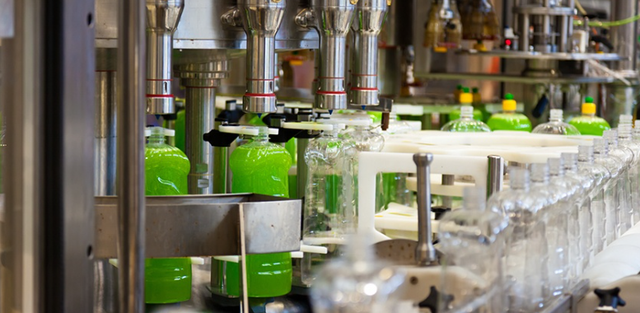Toxic Truths: Dangerous Chemicals Used in Pharmaceutical Production

The pharmaceutical industry plays a vital role in modern medicine, developing life-saving drugs that improve and extend lives. However, behind the scenes of drug manufacturing lies a hidden danger—the use of hazardous chemicals. These chemicals are essential for drug formulation, purification, and stabilization, but they pose serious health and environmental risks if not handled properly. Understanding these dangers is crucial for industry professionals, regulators, and even consumers who rely on these medicines.
Why Are Hazardous Chemicals Used in Drug Manufacturing?
Pharmaceutical production is a complex process that requires the use of various chemicals to achieve desired effects. These chemicals serve multiple purposes, including:
- Synthesis of Active Ingredients – Many drugs require chemical reactions that involve hazardous compounds to produce active pharmaceutical ingredients (APIs).
- Solvents for Drug Formulation – Solvents dissolve and extract compounds, ensuring proper drug composition.
- Preservatives and Stabilizers – Certain chemicals prevent microbial growth and extend the shelf life of medications.
- Purification Agents – Chemical agents remove impurities from drug formulations.
While these substances are necessary, their toxic nature raises concerns about exposure risks for workers, patients, and the environment.
Common Hazardous Chemicals in Pharmaceutical Manufacturing
1. Solvents
Solvents play a critical role in drug formulation, but many are highly toxic and volatile. Some of the most dangerous solvents used in pharmaceutical manufacturing include:
- Benzene – A known carcinogen linked to leukemia and other blood disorders. Long-term exposure can cause damage to bone marrow.
- Methanol – A toxic solvent that can cause blindness, nervous system damage, and death if ingested or inhaled in high concentrations.
- Toluene – Can affect the central nervous system, leading to dizziness, headaches, and long-term neurological damage.
- Chloroform – Previously used in medicine, now recognized as a hazardous solvent that can damage the liver, kidneys, and respiratory system.
2. Heavy Metals
Heavy metals are sometimes used in drug synthesis, catalysts, or stabilizers. However, they pose serious health risks if residues remain in medications or are improperly disposed of:
- Lead – Extremely toxic, causing brain damage, developmental issues, and organ failure. Even trace amounts can be harmful.
- Mercury – Previously used in some antiseptics and vaccines, mercury exposure can lead to neurological and kidney damage.
- Cadmium – A known carcinogen that can cause lung, prostate, and kidney damage upon prolonged exposure.
- Arsenic – Used historically in medicine, but now recognized for its severe toxicity, leading to cancer and organ failure.
3. Carcinogenic and Mutagenic Compounds
Certain chemicals used in drug manufacturing have been classified as carcinogens (cancer-causing) or mutagens (DNA-altering substances):
- Ethylene Oxide – Used for sterilizing medical equipment and pharmaceutical ingredients but is highly carcinogenic.
- Formaldehyde – Commonly used as a disinfectant and preservative, but long-term exposure increases cancer risk and respiratory issues.
- Acrylamide – A chemical used in drug synthesis that can damage the nervous system and increase cancer risk.
4. Reactive Chemical Agents
Some pharmaceuticals require highly reactive chemicals for synthesis. These substances can be hazardous if mishandled:
- Hydrochloric Acid & Sulfuric Acid – Strong acids used in drug production, capable of causing severe burns and respiratory damage.
- Sodium Azide – A toxic compound used in certain medications, which can be lethal in small doses.
- Hydrazine – Used in the synthesis of cancer drugs but is extremely toxic and a potential carcinogen.
Health and Environmental Risks
The use of hazardous chemicals in drug production poses risks at multiple levels:
- Worker Exposure – Factory workers and chemists handling these substances face inhalation, skin contact, and accidental ingestion risks, leading to chronic illnesses.
- Consumer Risks – Improper purification or contamination could lead to traces of these harmful chemicals in medications.
- Environmental Impact – Improper disposal of pharmaceutical waste can pollute water sources, soil, and air, affecting ecosystems and public health.
Safety Measures and Regulations
The pharmaceutical industry is heavily regulated to minimize chemical hazards. Some key safety measures include:
- Good Manufacturing Practices (GMP) – Enforced by agencies like the FDA, GMP ensures strict quality control and chemical handling protocols.
- Hazard Communication Standards – Employers must inform workers about chemical dangers through labels, training, and safety data sheets.
- Proper Waste Disposal – Regulations require pharmaceutical companies to safely dispose of hazardous chemicals to prevent environmental contamination.
- Personal Protective Equipment (PPE) – Workers handling toxic substances must wear protective clothing, gloves, and masks to reduce exposure risks.
The Future of Safer Drug Manufacturing
With growing concerns about chemical hazards, the pharmaceutical industry is exploring safer alternatives:
- Green Chemistry – The development of eco-friendly drug manufacturing processes that minimize toxic waste.
- Biotechnology Advances – Using biological methods, such as fermentation, to reduce reliance on hazardous chemicals.
- Stricter Regulations – Governments worldwide are tightening restrictions on hazardous substances to improve safety.
In Conclusion
Pharmaceuticals play a vital role in health and wellness, but their production relies on hazardous chemicals that can endanger workers, consumers, and the environment. Recognizing these risks is essential for promoting safer drug manufacturing practices. Hazmat chemical manufacturers play a key role in ensuring the responsible handling, storage, and disposal of these substances, helping to minimize potential hazards.
As the industry embraces advancements in green chemistry and stricter regulations, safer alternatives are emerging, reducing the risks associated with pharmaceutical production. By raising awareness of these toxic realities, we can push for stronger safety standards and support innovations that create a safer, more sustainable future for medicine manufacturing.
![HITV APP Download [Apk] Latest Version [Unlimited Movies]](https://hitvofficial.com/wp-content/uploads/2024/06/cropped-HiTV-Official-3.png)